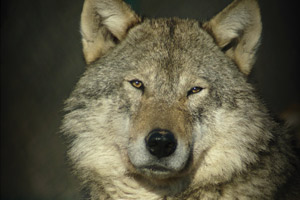
Photo courtesy Wikimedia Commons
Fort Riley in the Flint Hills of Kansas is situated inside 100,000 acres of North American tallgrass prairie—a rich ecosystem once home to a complete iconography of American wildlife: bison, wolves, bears, coyotes, and eagles, to name a few. Now it’s home to the 1st Infantry Division, the Big Red One, and home to tanks and other heavy military machinery.
You might imagine that explosions and tanks are incompatible with wildlife. But 11 years of birdlife surveys from Fort Riley, compared with 11 years of birdlife surveys at the nearby Konza Prairie Biological Station, found the number and composition of landbird species essentially identical at both.
How can this be? The 8,600-acre Konza Prairie is a nearly pristine tract managed by the Nature Conservancy and Kansas State University specifically to minimize human impact on the landscape. Fort Riley is seriously downtrodden countryside managed by the US Army specifically to maximize the favorable outcomes of violent conflicts.
The authors hypothesize that the secret to Fort Riley’s biological success may lie in the fact that tanks and explosions mimic the erstwhile effects of bison and wildfires on the environment here. Heavy equipment and live-fire exercises trample, burn, and fragment the prairie into a mosaic of disturbed and undisturbed areas similar to what existed prior to humans supressing fire and annihilating the bison.
(Other explanations are possible too, says the paper in Environmental Management: Fort Riley may act as a population sink, killing off its birds, which are then replenished by colonizers from the surrounding countryside—though the authors doubt this explanation.)
This study does not address the fate of wildlife other than grassland birds. But its results bode positively for at least the possibility that the other 2.5 million acres of military bases owned by the US military might similarly hide super secret pockets of biodiversity… a fragment of good news in this, the International Year of Biodiversity.
This is what I love about science: The only predictable outcome is that your assumptions will be challenged by the data.
Thanks to the blog Conservation Maven for a heads up on this story.














